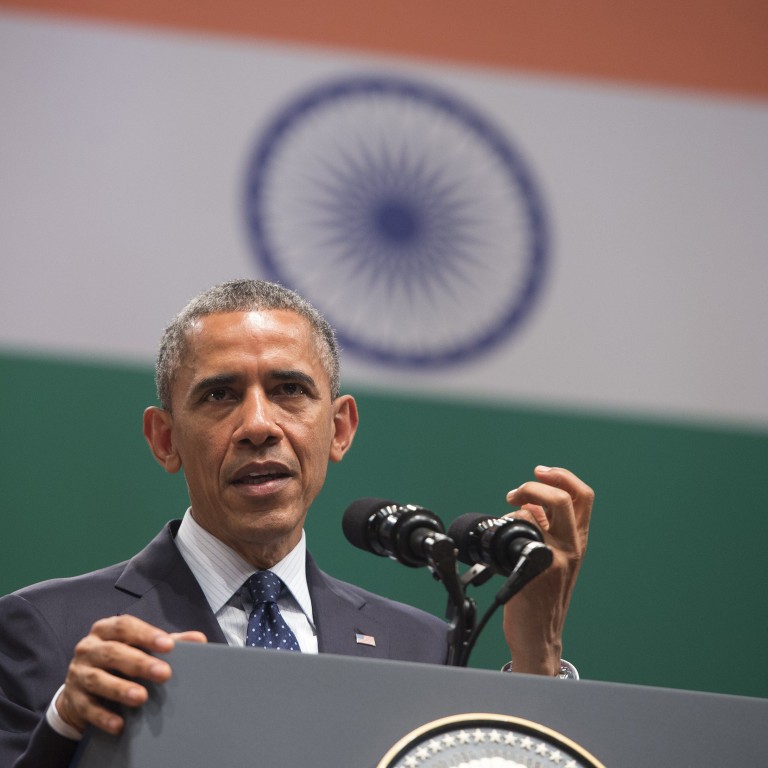
US rebalance must strengthen ties with the whole of Asia
Curtis Chin and Jose Collazo say policy must go beyond reacting to China
US President Barack Obama's recent visit to India may signify that South Asia is, like Southeast Asia, finally getting some well-deserved US attention as part of the so-called American rebalance - or what was once known as the "pivot" - to Asia. That's a welcome change as America wakes up to the fact that there is more to Asia than China, and that an Asian strategy is more than a grab bag of programmes seeking to match China's efforts. That said, the trip may well also have been intended as a message to China.
Yet, in his State of the Union address, Obama gave short shrift to Asia, while proclaiming past successes and outlining an agenda for further improving the US economy.
Pointedly, he chose not to use his 70-minute annual address to explain what can be a critical part of his economic agenda - increased engagement and strengthened trade relations with the entire Asia-Pacific region, including nations such as India that rarely make US headlines. Too often, East Asia alone - and reactions to China - have seemed the predominant focus of the US pivot.
Now, fresh from India, Obama has a real opportunity for expanded engagement, as ties improve between the US, the world's oldest democracy, and India, the world's largest.
With the International Monetary Fund expecting India's economy to grow by 6.3 per cent this year and 6.5 per cent next year, outpacing China's growth, there is good reason for the US pivot to head to India. These figures will grow if reforms take hold there.
But India should only be a part of a comprehensive US engagement with an Asia-Pacific region that is wary of China's assertiveness, particularly in the South China Sea.
What might that rebalance look like? First, the US must embrace a "business pivot" that goes beyond the large China marketplace, that looks to opportunities in South Asia and Southeast Asia. Already, US investment in Southeast Asia surpasses that in all four BRIC nations - Brazil, Russia, India and China - and can be built on. This would entail a concerted effort to "geographically rebalance" US efforts across the region, with a particular emphasis on strengthening economic ties with India and Indonesia, among others.
Second, the Obama administration and Congress must work to advance trade and commercial efforts that work for all involved, including small businesses and not just multinationals. Additionally, Washington must ensure that intellectual property rights are protected, and that tax policies do not discourage business by its own citizens, whether working directly in Asia or exporting US products.
Third, US companies must do their part by acting responsibly in every market where they operate. This may well entail going beyond the letter of the law in emerging markets such as Myanmar, Bangladesh, Cambodia and Sri Lanka, where regulatory deficiencies make it challenging to operate, but where US investment and good practices can have a significant impact.
A central benefit of peace and stability in Asia - a stated goal of the US rebalance - is greater commercial opportunities.
State visits, State of the Union addresses, and participation in Asia's annual array of summits may provide for photo ops, but what really matters is the hard work that follows. America certainly matters to Asia, but building the support of the American people and Congress for strengthened economic and trade ties with the entire Asia-Pacific region - including China - will also require US leaders who are serious about explaining and showing that Asia matters to America.


